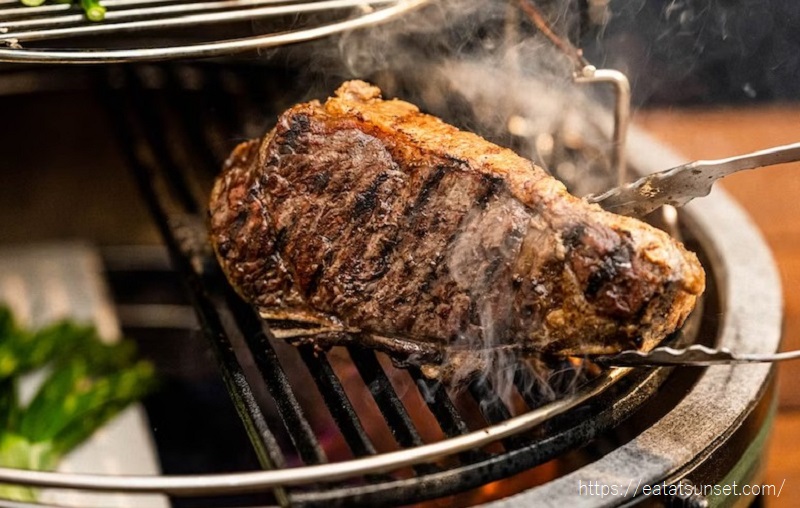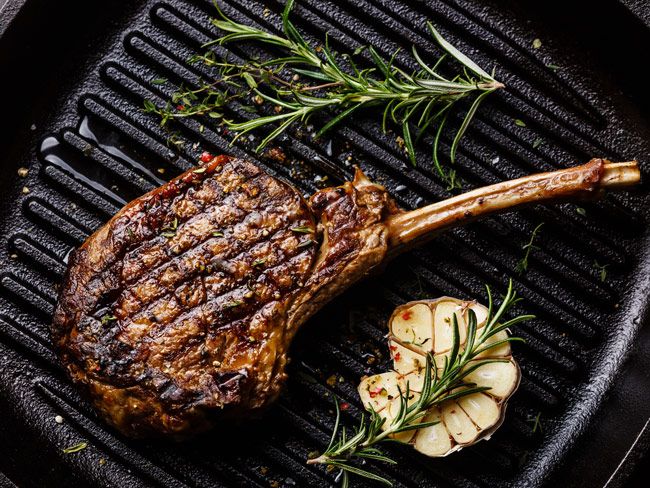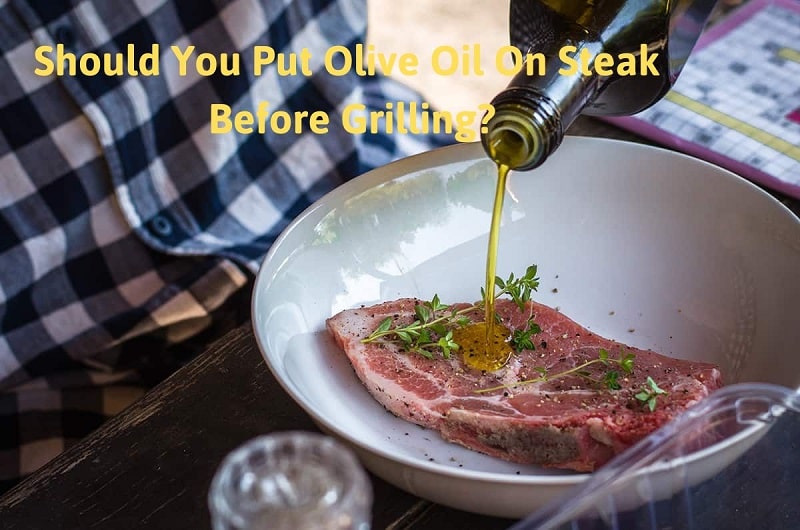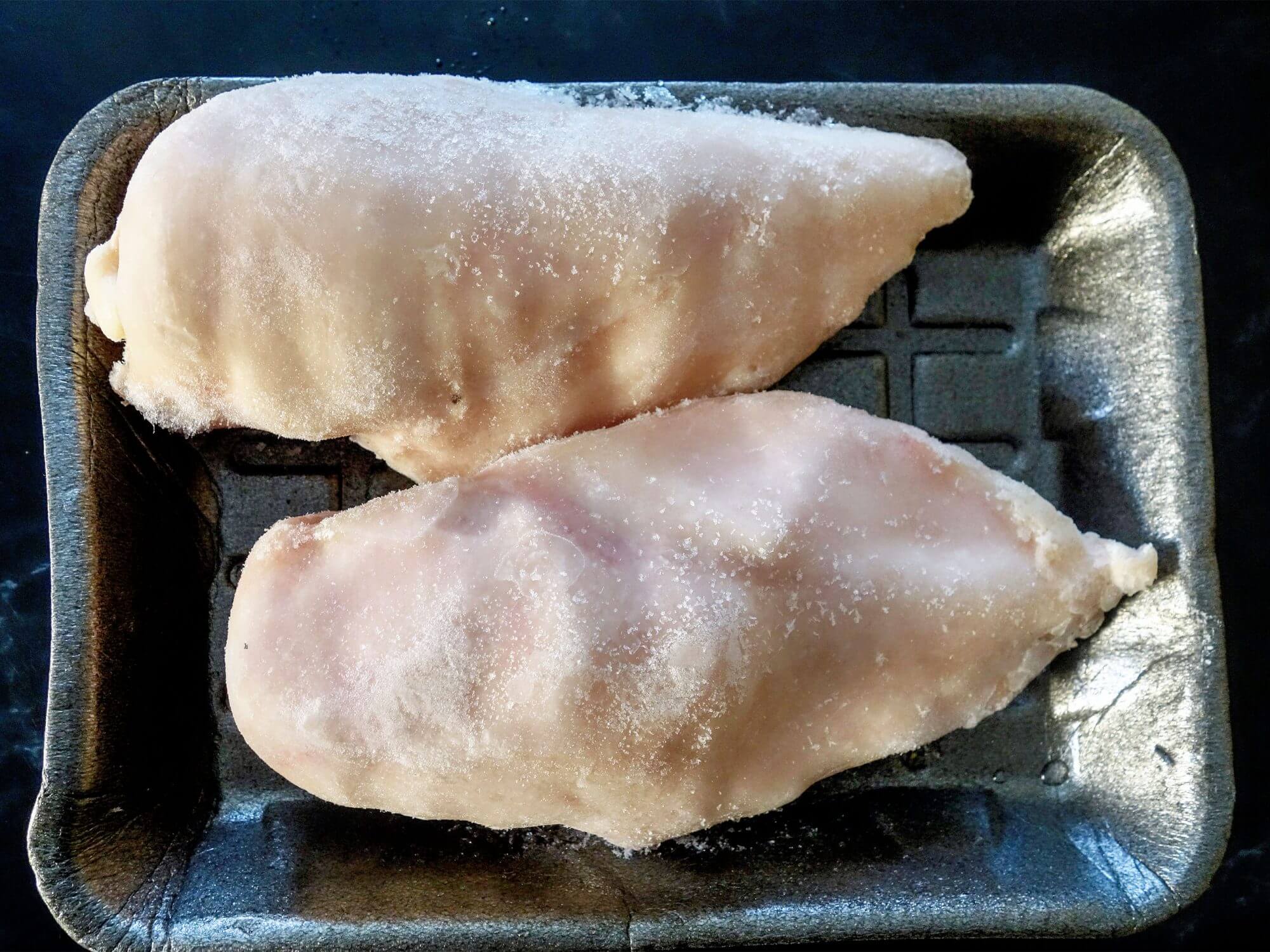Everyone loves a juicy, tender, and perfectly cooked steak, but recreating that mouthwatering restaurant-quality results at home can seem like a daunting task. Fear not, dear reader! In this blog post, Sunset Bar and Grill will guide you through the entire process – from selecting the right cut of meat to serving it with style.
We’ll explore various cooking methods such as grilling, stovetop, and sous-vide while sharing accurate timings for different doneness levels to ensure your steak turns out exactly how you want it.
Choosing The Right Cut Of Steak
Consider the marbling, thickness, and grade when choosing a cut of steak; options such as ribeye, filet mignon, and sirloin are popular choices.
Factors To Consider: Marbling, Thickness, And Grade
As a steak enthusiast, I can confidently say that selecting the perfect cut involves paying attention to three crucial factors: marbling, thickness, and grade. Marbling refers to the white flecks of intramuscular fat distributed throughout the meat – it’s these bits of glorious fat that contribute significantly to a juicy and flavorful steak.
Now let’s talk about thickness – an often overlooked but equally important consideration when choosing your ideal cut. In my experience, thicker steaks are easier to cook evenly without overcooking while ensuring a beautiful sear on both sides.
Aim for steaks that are at least 1 inch thick or even up to 2 inches if you prefer rare doneness levels without sacrificing crust quality.
Popular Cuts: Ribeye, Filet Mignon, Sirloin, Etc.
In my journey to master the art of cooking the perfect steak, I’ve come across several popular cuts that make a significant difference in taste and texture.
Filet Mignon is a luxurious choice that comes from the tenderloin – it’s known for being incredibly tender and lean. Fans of this cut will appreciate its delicate flavor profile.
On the other hand, Ribeye boasts bold flavors due to its ample marbling; you can expect rich, buttery notes with each bite. I personally love drizzling some olive oil on the steak before cooking ribeye, as it enhances its irresistible texture even more! Top Sirloin presents an attractive middle ground between these two cuts—it’s satisfyingly juicy but also relatively lean compared to Ribeye or Porterhouse steaks.

Preparing And Seasoning The Steak
Preparing and seasoning the steak is a crucial step to making or breaking your dish. Let’s dive into some pro tips on bringing the steak to room temperature, choosing seasonings, and even marinating options before we move on to cooking methods for the perfect steak.
Bringing It To Room Temperature
Before diving into the actual cooking process, there’s a crucial step that many people overlook – bringing the steak to room temperature. This might seem like an insignificant task, but in reality, it plays an essential role in achieving that perfect, evenly-cooked steak.
So why is this step so important? When you allow your meat to sit at room temperature for about 30-40 minutes before cooking, it contributes to a more consistent outcome.
The reason behind this is simple. As the steak warms up closer to its final serving temperature (as much as 20-25°F), it helps ensure even cooking across every part of it when exposed to heat.
Salt And Pepper Or Other Seasonings
When seasoning a steak, there is no need to complicate things. The classic combination of freshly cracked black pepper and kosher salt always delivers excellent results.
However, if you want to experiment with different flavors, a variety of seasonings can be used.
While it’s tempting to oversalt the steak in an attempt to amplify its taste, too much salt will draw moisture out of the meat resulting in a dry and tough outcome.
Marinating Options
Marinating your steak is a great way to add flavor and tenderness. A good marinade typically consists of an acid, fat, and flavoring, which penetrate the meat for a greater depth of taste.
Red wine is one popular option for marinating and tenderizing steak. However, it’s important to choose the right marinade for your cut of meat: tougher cuts can benefit from longer marination times (6-24 hours) while more tender cuts only require 15 minutes or so.
When planning on grilling a perfect steak without marinating it first would not let you fully enjoy the steak flavors as much as when using a well-prepared marinade considering how steaks are meant to be grilled with juicy textures that make them savory at every bite.
Cooking Methods For The Perfect Steak
Explore the different cooking methods for achieving the perfect steak, from grilling to stovetop and even sous-vide options – you might be surprised by what works best for your tastes.
Grilling: Preparing The Grill, Searing, Cooking, And Resting
One of the most popular and traditional methods for cooking a steak is grilling. To grill the perfect steak, start by cleaning your grill grates thoroughly to ensure that they’re free from debris.
Then, preheat your grill to high heat for about ten minutes before reducing it to medium-low heat.
Once your grill is ready, place the steak on the hot grates and let it cook for a couple of minutes on each side until you have achieved a good sear. Then, move the steak over to indirect heat and continue cooking until it reaches your desired level of doneness.
After removing it from the grill, cover your steaks with foil tented loosely on top while allowing them to rest at room temperature for at least 5-10 minutes so that all juices settle evenly into the meat before slicing into portions ensuring its tenderness when served with some salt flakes or pepper powder sprinkled just as preferred according.
As you slice through each slice cautiously inwards keep an eye out so If there are any visible grains running across one another against which way they cut i.e., perpendicular vs parallel direction.

>>> Read more: Why Put Oil on Steak Before Grilling?
Stovetop: Preparing The Steak, Seasoning, Searing, And Finishing In The Oven
When cooking steak on the stovetop, it’s important to start with room-temperature meat. Before seasoning the steak, make sure it’s patted dry with paper towels so that the seasoning sticks better.
I usually season my steaks with kosher salt and freshly ground black pepper, but you can also add other seasonings according to your preference.
To cook the perfect stovetop steak, heat up a cast iron skillet or another oven-safe pan over high heat until very hot. Add some olive oil to the pan (just enough to coat it) and place the seasoned steak in carefully using tongs.
Let it sear for about 2-3 minutes per side until a nice crust forms before transferring the entire skillet into a preheated oven at 450°F (230°C). Cook for an additional 6-8 minutes (depending on thickness and desired doneness), then take out of the oven and let rest for at least 5 minutes before slicing against the grain.
Sous-vide: Preparing The Steak, Vacuum Sealing, Cooking In Water, And Searing
Sous-vide cooking is a great way to cook the perfect steak every time. To prepare your steak for sous-vide cooking, start by seasoning it with salt and pepper or your favorite seasonings.
Then, place the steak in a plastic bag and vacuum seal it using either a vacuum sealer or the water displacement method.
Cooking times vary depending on the thickness of your steak but usually range from 1 to 3 hours.
Cooking The Perfect Steak
To achieve the perfect steak, it’s crucial to cook it at the right temperature and for the right amount of time based on your preferred level of doneness – read on to discover our recommended guidelines and tips!
Timing And Temperature Guidelines For Different Doneness Levels
I have found that achieving the perfect doneness level for steak requires both timing and temperature precision. For rare steak, I recommend a cooking temperature of 120-130°F, which should take no more than two minutes per side on high heat.
Medium-rare steak should be cooked to 130-135°F, taking about three minutes per side. To cook a medium steak at 135-145°F, it typically takes four minutes per side.
One trick I like to use when grilling is to sear each side first over high heat for about one minute before moving it to indirect heat for slower cooking until reaching my desired doneness level.
It’s essential to let your meat rest before slicing into it so that all those delicious juices stay inside and keep the meat moist and tender.
Tips For Achieving The Perfect Sear And Crust
Achieving the perfect sear and crust on a steak is an art form that takes practice to master. One of the easiest ways to achieve a good sear is by preheating your skillet or grill to a high temperature before cooking.
This will help caramelize the exterior of the meat, giving it that beautiful brown crust and allowing for maximum flavor development.
When seasoning your steak, be sure not to add too much salt in advance, as this can pull moisture out of the meat and impede browning. Instead, season with salt and pepper just before cooking for maximum flavor enhancement.
Another technique worth trying is reverse searing which involves slow-cooking at low temperatures in an oven followed by high-heat searing – usually reserved only for top-quality steaks like filet mignon or ribeye! With these tips under your belt, you’re sure to impress anyone at dinner with perfectly cooked steaks every time!

Serving The Perfect Steak
Let the steak rest for a few minutes before slicing to ensure that the juices redistribute throughout each slice.
Resting Time And Slicing Techniques
Resting the steak after cooking is essential to ensure that it retains its juices and is tender when served. A general guideline for resting time is approximately as long as you cooked it or at least 5 minutes, depending on the thickness of the steak.
During this time, cover your steak loosely with foil to retain warmth.
When ready to serve, slice against the grain of the meat using a sharp knife. Slicing against the grain ensures that each piece will be tender and easy to chew.
Ideal Sides And Accompaniments
When it comes to serving the perfect steak, the ideal side dish is just as important. A well-chosen side can balance and complement the flavor of the steak while adding texture and visual appeal to the overall presentation.
The article suggests 30 different sides that pair perfectly with steak, from lighter options like roasted vegetables or a simple green salad to heartier dishes like truffle fries or macaroni and cheese.
For those who prefer something sweet alongside their savory steak, caramelized carrots or glazed beets can provide a subtle yet satisfying contrast in flavors.
Wine Pairings
I always find that a perfectly cooked steak simply begs for a glass of wine to accompany it. When choosing a wine pairing, I generally opt for dry red wines as they pair particularly well with beef.
Rich, fatty cuts of steak need high-tannin wines like Cabernet Sauvignon to balance out the mouthfeel and cut through the richness of the meat.
One thing that’s important to keep in mind is that different types of steaks will naturally have different levels of fat content and marbling, which can influence your choice of wine pairing.
For example, if you’re having a filet mignon – which tends to be very low in fat – then you might want to choose something on the lighter end like a Pinot Noir or even a Beaujolais.
Conversely, if you’re serving up some ribeye or sirloin (which can be quite rich), then something heavier like an Australian Shiraz could be just perfect.
Conclusion
Cooking the perfect steak is a skill that every meat lover should master. From choosing the right cut to seasoning and cooking it just right, there are plenty of factors to consider in order to achieve mouthwatering results.
By following these tips and techniques, anyone can become a true steak connoisseur. Whether you prefer grilling, stovetop cooking or the sous-vide method, the key is always timing and temperature control.

FAQs:
1. What is the best type of steak to cook for the perfect result?
There are many types of steak available, but cuts such as Ribeye or Filet Mignon tend to be popular choices due to their high levels of marbling and tenderness. It’s important to choose a quality cut that is at least 1 inch thick to ensure it cooks evenly.
2. How do I know when my steak is cooked perfectly?
The easiest way to determine if your steak has reached the desired level of doneness is by using a meat thermometer. For medium-rare, the internal temperature should reach 135°F (57°C), while medium should be around 145°F (63°C), and well-done should hit 160°F (71°C).
3. Do I need any special equipment or techniques for cooking steak?
A cast iron skillet or grill pan with ridges can help create those iconic sear marks on your steak while providing even heat distribution. Another technique involves reverse searing which involves cooking at a low temperature first before finishing off with high heat.
4. How long should I let my steaks rest after they come off the grill or stove?
It’s essential to let your steaks rest for about five minutes once they’re removed from the heat so that juices can redistribute throughout all parts of the meat ensuring optimal flavor and texture. This resting period also helps keep them juicier upon cutting into them rather than losing too much moisture which leads to drier results overall.





